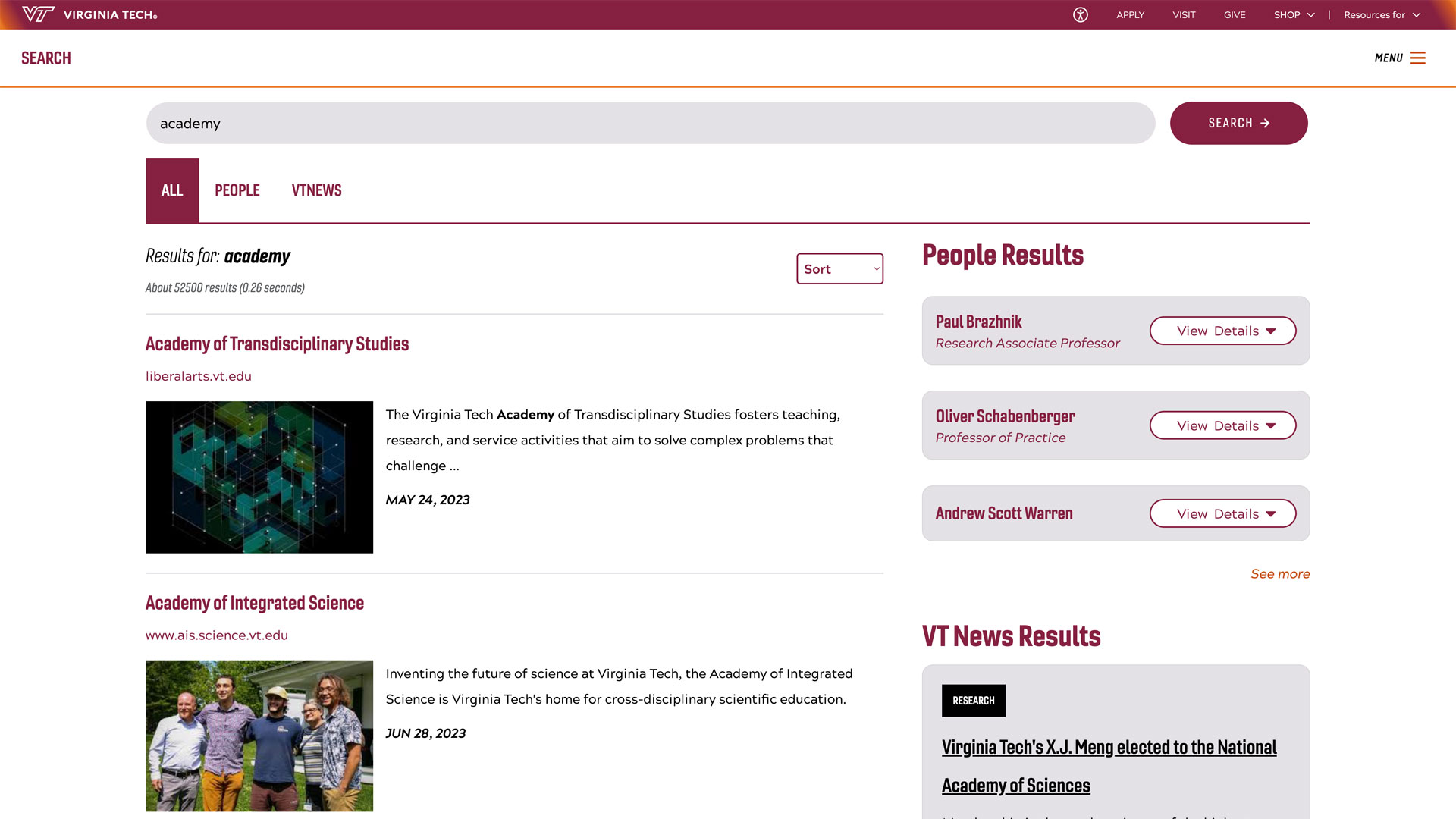Pioneering transportation research
Richard Hanowski of the Virginia Tech Transportation Institute is helping cut down on motorcycle-related crashes in low- and middle-income countries with the Motorcycle Collision-Alert and Management System.

Bumping into some motorcycle researchers at a lunch in Malaysia put Rich Hanowski on a road toward helping reduce rider collisions in low- and middle-income countries.
“It was really kind of by happenstance,” said Hanowski, senior research scientist at the Virginia Tech Transportation Institute (VTTI). “I happened to sit next to that group at lunch, we hit it off and started talking about how we could collaborate in some capacity.”
What could have been a simple meal at a conference instead became an opportunity Hanowski seized to take his research down a new road. The conversation started to open his eyes to areas of the world where transportation culture is dominated by low-capacity motorcycles, little to no riding regulations, and much higher rates of rider fatalities than their international peers.
“And that put me on the path to look for solutions to address this problem,” Hanowski said.
Since that first meeting in 2015, Hanowski, who is the director of VTTI's Division of Freight, Transit, and Heavy Vehicle Safety, has worked with researchers and universities in Malaysia and Indonesia to better quantify the dangerous landscape of motorcycle travel there and explore potential interventions. This spring, he and VTTI colleague Carl Cospel were awarded a proof-of-concept grant from Virginia Tech’s LAUNCH: Center for New Ventures to develop one of those interventions for commercial use — the Motorcycle Collision-Alert and Management System.
“These are some of the poorest people, relatively speaking, in the world and they don’t have the benefit of vehicle safety technology that we have in developed countries,” Hanowski said. “There’s an injustice in that and an opportunity for us at VTTI, where we’re passionate about road safety and saving lives. I actually think it’s our obligation. We need to do this.”
Virginia Tech Curious Conversations Podcast
The system includes three components: a technology bundle for the bike — including an accelerometer, GPS, and a forward distance sensor — a mobile device application, and a backend management system. It will provide users with in-ride alerts, a post-ride report, and tailored education and training information to support safe riding in the future.
With the help of Virginia Tech’s LICENSE: Center for Tech Commercialization, the system has become exclusively licensed Virginia Tech Intellectual Properties technology. The initial market focus for the product is companies that use motorcycle fleets as a primary method of delivering goods and services, which is a common practice in this region of the world.
Hanowski also received a Fulbright Scholar Award for the 2024-25 academic year to support this work.
In December 2023, the World Health Organization reported that approximately 1.19 million people die in road traffic crashes each year, with 92 percent of these fatalities occurring in low- and middle-income countries. In those areas, motorcycles are often cited as being involved in more than 70 percent of road deaths.
“The transportation system is very different here than in the U.S.,” said Hardianto Iridiastadi, professor of systems engineering at the Bandung Institute of Technology in Bandung, Indonesia, and a collaborator on the project. “We do not have stop signs. We do not post speed limits. We do not have yield signs. Basically, it’s like people can do whatever they want.”
Prior to 2015, Hanowski’s primary research focus was commercial trucking. His work has impacted national transportation policy including that related to truck driver fatigue, hours-of-service, and driver distraction and texting.
During his 27 years at VTTI, he has served as the principal or co-principal investigator on over $100 million of contract research resulting in more than 300 publications, including journal articles, conference papers, book chapters, and technical reports. Hanowski said his first motorcycle-related study was a comparison of U.S. and Malaysian data on collisions between trucks and motorcycles.
“These really aren’t a big deal in the U.S., but in Malaysia, it turns out there’s a really big problem with motorcycles running into the backs of trucks stopped on the shoulders of roads,” Hanowski said. “When a motorcyclist does that, given the vulnerability of the rider, they are often severely injured or die. So it’s a really significant consequence to a rider’s human error."
Between the high number of motorcycle riders and frequency of high-risk maneuvers that are outlawed in the majority of the U.S., such as lane splitting, many roads in both Malaysia and Indonesia are constantly filled with potentially dangerous actions.
“When I went over there [to Indonesia], I had this picture in my mind based on videos and what Rich had told me, but there’s no comparison to the real thing. I couldn’t believe it,” said Cospel, director of the Hardware Engineering Lab at VTTI. “It was just mass chaos. The bikes were everywhere, pushing every inch between vehicles, the side of the road, sidewalks, everywhere just trying to get by you.”
Hanowski worked with researchers in Malaysia to incorporate elements of VTTI’s pioneering naturalistic driving studies into researching rider behavior in the country.
Developed in the early 1990s, the system uses unobtrusively placed cameras and sensors inside a volunteer’s vehicle to assess driver behavior, crashes, and near-crash incidents, referred to as safety critical events. The institute has since collected data from nearly 7,000 vehicles, including cars, tractor-trailers, bicycles, and e-scooters and amassed enough video that it would take about 1,030 years to watch it all.
By utilizing this system with the motorcycle riders, Hanowski and his team were able to better assess rider behavior.
“We came to the realization that riders, when they’re doing these risky activities, were not always looking forward,” Hanowski said. “They’re looking to the side, they’re checking blind spots, they’re checking over their shoulders for other vehicles that might be merging, etc. All of this while the bike travels forward.”

Hanowski and his colleagues wondered if providing some sort of advance notice about roadway hazards might decrease crash and near-crash incidents. They developed their first prototype, which included forward collision warning and conducted an intervention study with 35 riders.
“We had well over 500 people that wanted to try it,” Hanowski said. “As you talk to people there, you hear that they realize it’s a really risky riding environment and that they want some sort of safety support.”
The initial findings showed a reduction in safety critical events as compared to baseline riding. And though the interventions yielded safer riding, it was actually the few times the demo systems cut out that revealed another interesting finding.
“One fascinating thing to hear was from a rider who talked about how even though he wasn’t getting the alerts anymore — because the system was inactive — he could still hear in his head when the beeps would have occurred,” Hanowski said. “That’s an important finding because it demonstrates transfer of training from the system to the rider. It's really powerful when an alerting technology can influence safe riding behavior like that.”
Following the initial testing, Hanowski began to explore ways to make a version of the monitoring and alert system available to more people in that region of the world. Hanowski looked to nearby Indonesia, which has nearly identical motorcycle safety issues, and to his former classmate Iridiastadi, whom he met during their graduate studies in industrial and systems engineering at Virginia Tech.
“Motorcycle use is the primary means of online transportation services here, transporting people, goods, or food,” said Iridiastadi, who graduated with a Ph.D. in industrial and systems engineering in 2003. “It’s not uncommon to see a driver with two or three passengers, including kids or babies, and whatever else they can carry, as long as they can use a rope to tie it down.”
Like Malaysia, these circumstances have created plenty of potentially deadly situations.
“Roadway crashes, about 70 to 80 percent of them have to do with motorcycles, so being able to mitigate that with technology would be very beneficial,” Iridiastadi said.
1.19 million
road traffic crash fatalities per year.
92%
of the road traffic crash fatalities are from low to middle-income countries.
70%
of road deaths involve motorcycles in countries where motorcycles are the primary mode of transportation.
To add even more of VTTI’s expertise to the project, Hanowski reached out to Cospel, who previously played critical roles in the institute’s data acquisition systems, connected vehicle systems, and automated vehicles.
“Rich knew I am an avid motorcycle rider, so it’s a problem I would like to see solved, and that I had experience with what needed to be done technology wise,” said Cospel. “I said yes very quickly.”
The research team also added Feng Guo, lead data scientist for VTTI, to help better harness the multifaceted data collected.
“The system will provide individualized safety improvement plans to help both individual riders and motorcycle fleets to reduce high-risk behavior, mitigate environmental risk, and reduce crashes,” said Guo, who is also professor of statistics and the Patricia Caldwell Faculty Fellow at Virginia Tech.
One of the primary additions to the most recent system is a phone app that provides feedback to the rider at the completion of a ride. This information will include statistics such as speed, rate of acceleration, and instances of near collisions as well as areas the rider could improve on.

Such immediate feedback opens up the possibility for riding to be gamified in ways that greater incentivizes safe riding. This is especially true when it comes to the large number of companies in Southeast Asia that use fleets of motorcycles as their primary means of delivering goods and services. Making that population of riders safer alone could have a tremendous overall impact on riding culture.
“I think that’s where this will really shine over time,” Cospel said. “You have to have a huge market penetration to make a difference. So we’re trying to figure out how to get this system on as many motorcycles as possible and really change behavior over time.”
By successfully exporting some of the technology VTTI has pioneered during the last two decades, the researchers believe they may also empower their international colleagues to positively influence their countries’ transportation policy.
“Our naturalistic driving studies have been very helpful in the U.S. in providing that scientific foundation to develop policies,” Hanowski said. “Being able to collaborate with scientists there, building their capabilities to apply this to benefit their own communities, it’s just a very fulfilling thing that we need to do.”
Regardless of exactly how any large-scale shift toward safer riding occurs, it's Hanowski’s mission to help make it possible.
“There are so many motorcycle road deaths in these countries, if we have a technology or approach that can help take a bite out of that and keep people a little safer, making that possible is my ultimate goal,” Hanowski said.

Richard Hanowski
Virginia Tech Transportation Institute
Senior Research Scientist
Director of the Division of Freight, Transit, and Heavy Vehicle Safety
Over 30 years of research expertise, including:
- Human factors with both heavy / light vehicles
- Laboratory / field testing / simulation
- Advanced system development / testing
- Naturalistic driving
- Design guideline development
- Human performance evaluation
Informed policies on:
- National transportation
- Truck driver fatigue
- Hours-of-service and driver distraction
- Texting and driving
Funding: ~$81 million
Scholarship: 300+ publications, including journal articles, conference papers, book chapters, and technical reports.




